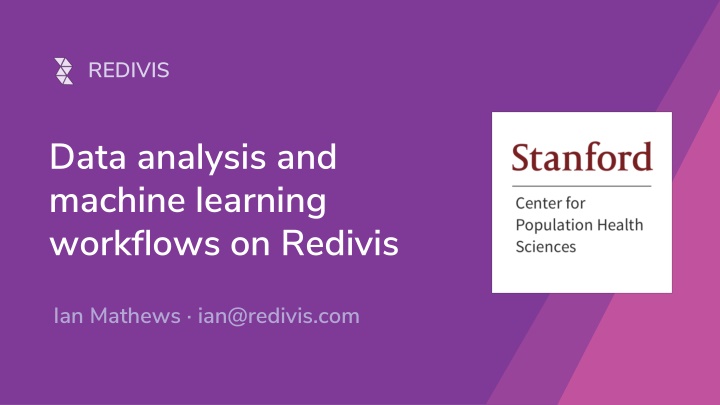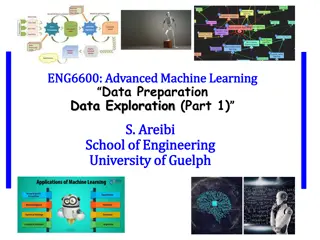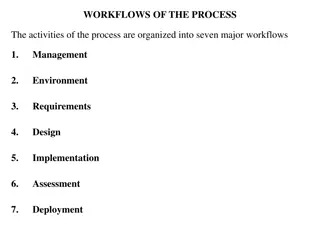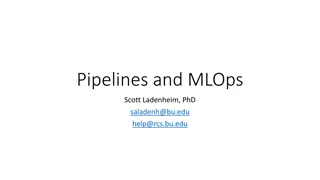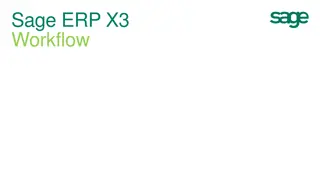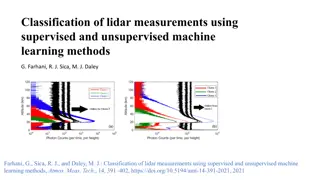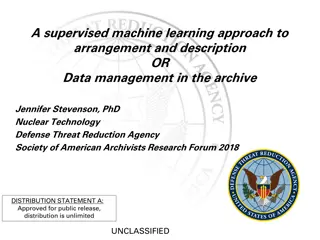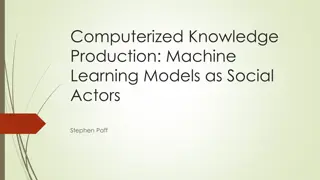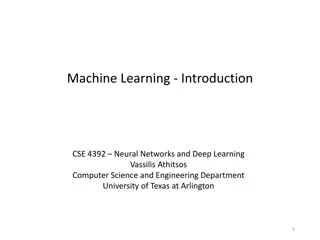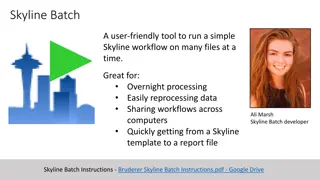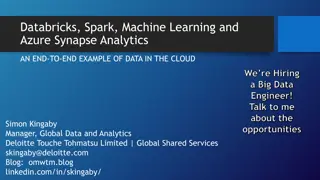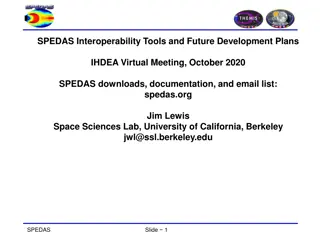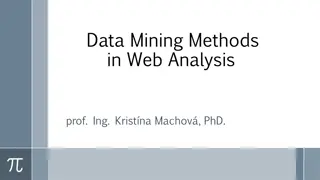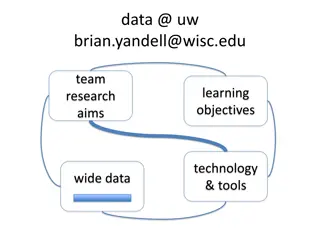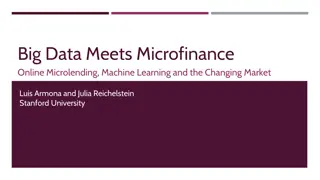REDIVIS Data Analysis and Machine Learning Workflows
Redivis enables research centers to distribute rich datasets and provides scientists with the means to work with data efficiently. The platform allows for high-performance computation using SQL, R, Python, and more, promoting collaborative and reproducible data analysis. With a focus on accessibility and data sharing, Redivis simplifies machine learning tasks and offers computational notebooks in various programming languages. Explore Redivis's comprehensive data platform for your research needs.
Download Presentation

Please find below an Image/Link to download the presentation.
The content on the website is provided AS IS for your information and personal use only. It may not be sold, licensed, or shared on other websites without obtaining consent from the author.If you encounter any issues during the download, it is possible that the publisher has removed the file from their server.
You are allowed to download the files provided on this website for personal or commercial use, subject to the condition that they are used lawfully. All files are the property of their respective owners.
The content on the website is provided AS IS for your information and personal use only. It may not be sold, licensed, or shared on other websites without obtaining consent from the author.
E N D
Presentation Transcript
REDIVIS Data analysis and machine learning workflows on Redivis Ian Mathews ian@redivis.com
Todays agenda Brief introduction of Redivis at Stanford Redivis core concepts and analysis walkthrough Let s do some Machine Learning! Q&A
Our mission Redivis enables research centers to distribute rich datasets, and provides scientists with the means to understand them. We strive to reduce barriers in working with data, and to create intuitive tools that make data science accessible and reproducible.
Redivis, a.k.a The Stanford Data Farm The deployment of Redivis at Stanford: https://redivis.com/Stanford Home to 12 organizations, 363 datasets, 194 TB of data. Groups from medicine, sustainability, business, education, and more.
Analyzing data on Redivis High-performance compute: Use SQL, R, Python, Stata, SAS, or a no- code interface. Interdisciplinary: Combine any dataset you have access to even from other institutions. Collaborative: Work with your peers in real time, and build off of others work, all within a secure environment. Reproducible: Full code history and ability to revert to previous state. Aligned with data + code sharing funder guidelines.
Lets talk machine learning What do I actually do? Inference with a pre-trained model -> classify these patient notes Fine-tuning a pre-trained model with labeled data Creating a novel model from scratch (hardest / most $$) Where do I start? Hugging Face Tutorials Pre-trained models
Machine learning on Redivis Computational notebooks in Python, R, Stata, and SAS Easily port between systems (e.g., import from Colab) The default, free notebook has 2 CPUs, 32GB RAM Can provision any other VM on Google Cloud, at-cost Up to 16xA100 GPUs, 96 vCPUs, 1360GB RAM Do I need a GPU? Just testing things out? Not necessarily! Try the free notebook. Doing real work, at scale? Probably, it s just so much faster.
Analysis on Redivis: summary On large datasets, always do as much preprocessing as possible via transforms. Make sure your code takes advantage of your hardware! Always check that CPU, memory, GPU are being full utilized. Customizable VMs allow for you to load, apply, and fine-tune machine- learning models. Leverage common languages and libraries to allow for code portability across systems.
Where does Redivis excel? Large datasets High-risk datasets Collaborative workflows Reproducibility Low barrier to entry, can do a lot for free
05 Q&A
06 Additional resources
Additional resources Learn more Redivis for researchers Redivis for organizations
Additional resources Support materials Documentation API documentation Security overview
